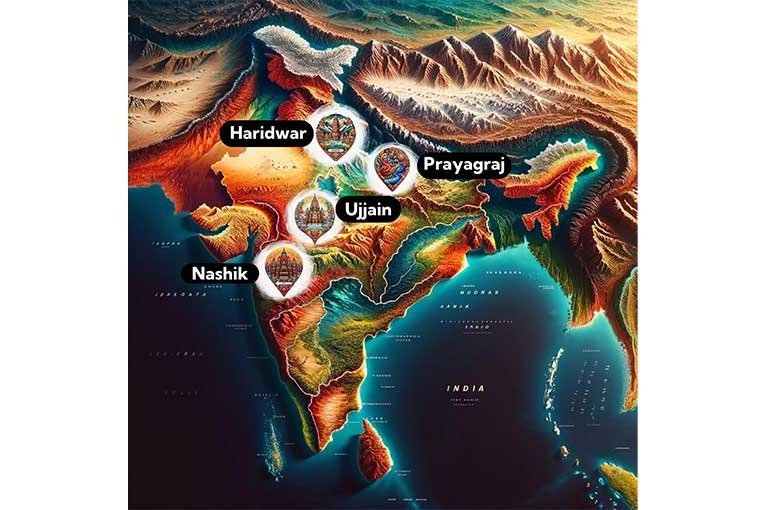Exploring the Four Sacred Kumbh Mela Locations in India
The Kumbh Mela is a massive Hindu pilgrimage and festival that draws millions of devotees to four sacred locations in India, known as Prayagraj, Haridwar, Ujjain, and Nashik. These locations hold immense religious significance and are believed to be where drops of nectar fell from the Kumbh (pot) that emerged during a mythical battle between gods and demons. The Kumbh Mela is celebrated every 12 years in each of these four cities, rotating among them in a cyclical manner. Let’s delve into the unique features and religious importance of each of these sacred Kumbh Mela locations.
Prayagraj (Allahabad)
Prayagraj, formerly known as Allahabad, is considered the holiest of all the Kumbh Mela locations. It is located at the confluence of the Ganges, Yamuna, and Saraswati rivers, known as the Triveni Sangam. The significance of Prayagraj lies in the belief that bathing at this sacred confluence cleanses the soul of all sins and helps achieve moksha (liberation). The Kumbh Mela in Prayagraj is the largest and most grandiose of all the gatherings, attracting millions of pilgrims from across the country and around the world. The city comes alive with colorful tents, spiritual discourses, and various cultural events during the festival.
Haridwar
Haridwar, situated on the banks of the holy Ganges river in the state of Uttarakhand, is another significant Kumbh Mela location. The city is known for its ancient temples, ashrams, and ghats where devotees come to perform rituals and seek blessings. The Kumbh Mela in Haridwar is characterized by the elaborate processions of sadhus and saints, who lead the sacred bathings in the river. The city’s tranquil environment and spiritual aura make it a popular destination for seekers and devotees looking to immerse themselves in the divine atmosphere of the Kumbh Mela.
Ujjain
Ujjain, an ancient city in the state of Madhya Pradesh, is renowned for its historical and mythological significance. The Kumbh Mela in Ujjain is held on the banks of the Shipra river and is known as the Simhastha Kumbh. The city is associated with the legend of Lord Shiva and is believed to be one of the oldest living cities in India. The Kumbh Mela in Ujjain is characterized by its spiritual fervor, with devotees participating in various rituals, prayers, and holy dips in the river. The city’s rich cultural heritage and ancient temples add to the sacred ambiance of the festival.
Nashik
Nashik, located in the state of Maharashtra, is another important Kumbh Mela site, situated on the banks of the Godavari river. The city is known for its picturesque surroundings, vineyards, and ancient temples. The Kumbh Mela in Nashik is marked by the traditional rituals and ceremonies performed by priests and devotees along the river banks. The city’s vibrant atmosphere, coupled with the spiritual energy of the Kumbh Mela, creates a unique blend of devotion and celebration.







